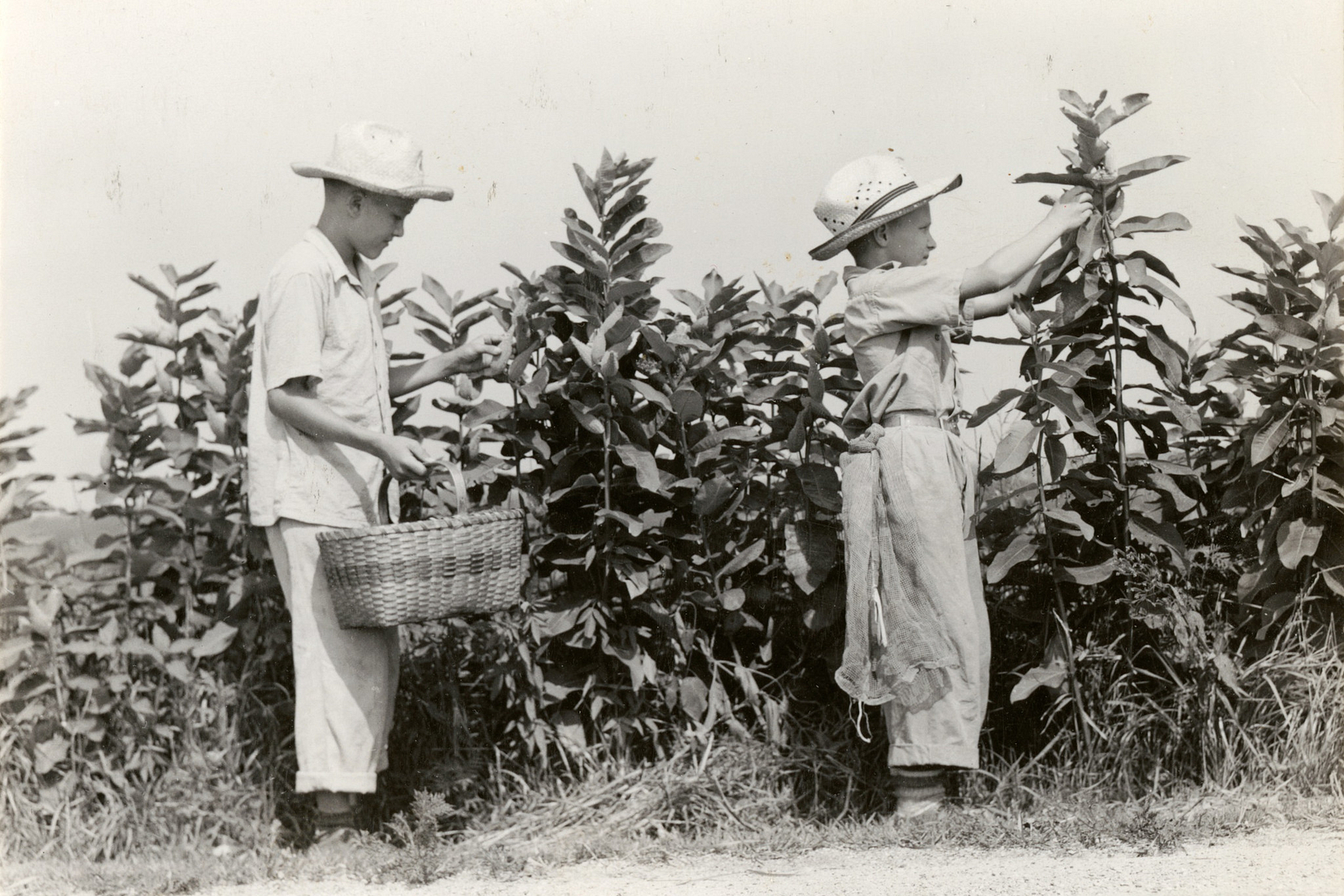Back in the day
WHEN PICKING MILKWEED WAS A PATRIOTIC PURSUIT
Kathryn A. Kahler
 This 1944 DNR photo shows two boys gathering milkweed pods in Dane County. Floss from the pods was used to fill life preservers for military use during World War II. © DNR FILES
This 1944 DNR photo shows two boys gathering milkweed pods in Dane County. Floss from the pods was used to fill life preservers for military use during World War II. © DNR FILESThese days kids are recruited to help save monarch butterflies by joining campaigns to collect milkweed pods and plant new stems. But back in the fall of 1944, similar efforts asked children to help save lives in another way involving milkweed.
"Two bags save one life," read one government slogan. Others were, "Don't let our sailors sink" and "Schoolchildren of America? Help save your fathers', brothers', and neighbors' lives by collecting milkweed pods."
Seventy-five years ago in the height of World War II, milkweed was valued for its floss, a naturally buoyant and water-repellant fiber used to fill life jackets for soldiers. It took two 20-pound bags of milkweed pods to make one life preserver.
Because men were at war and women were filling their places in the workforce, children became the government's focus for recruitment. Some picked milkweed as a class project, gathering pods in their walks to and from school where their teachers collected them. Others were a part of organized projects for 4-H clubs or Scout groups.
Before the war, life preservers were made from kapok, a silky fiber from the fruit of a tree grown in the East Indies (present-day Indonesia). But Japan's occupation of that region during the war cut off kapok supplies and the federal government identified milkweed as a suitable substitute.
There wasn't time to cultivate the amount of milkweed it would take to supply the need — 2 million pounds of ripe pods could make 100,000 life jackets – so the call went out to schoolchildren to pick wild milkweed.
Children were supplied with open-mesh onion bags or gunny sacks and sent afield to pick in September to mid-October, when the pods were ripe but not yet fully open. After picking, bags were tied together and strung saddle-style over fences to dry.
Urban and rural schoolchildren were encouraged to collect enough milkweed to make one life jacket — at least two sacks apiece — and were paid 15 to 20 cents per bag. Members of 4-H clubs received extra credit for their efforts.
A 4-H history website (4-hhistorypreservation.com/History/WW-II_Support/#TOC-20) tallied the collection efforts by 4-H groups across the country, reporting that "by November 1944, Wisconsin 4-H'ers had already passed their 50,000 sacks goal."
A report by the Michigan History magazine ("A weed goes to war, and Michigan provides the ammunition") tells the story of what happened to the pods once they were picked. In 1942, the government appropriated a former lumber company in Petoskey, Michigan – located on the milkweed-rich northeastern shores of Lake Michigan — as the country's only milkweed processing plant.
Petoskey was accessible by road, rail and ship. Collection points were established at rural stores and small businesses across the Midwest and New England to funnel the fruits of the children's efforts to the company's processing plant, where they went through a procedure to dry and separate them.
Bagged pods passed through a dryer at the rate of 1,000 bags per hour, were lifted and emptied into a hopper, then gently crushed to release the floss, which was collected in a bagging chamber. The broken pods and seeds fell through a grate to collection bins below.
It was a time when patriotism was intergenerational. Everybody made sacrifices and children stepped up to the challenge and did their part. Reports of the efforts estimate that by the end of the war, children had picked over 2.5 million pounds of milkweed.
Kathryn A. Kahler is associate editor of Wisconsin Natural Resources magazine.

